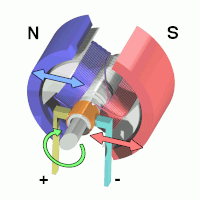
Photo from wikipedia
The Volta phase plate (VPP) is a remarkably simple device comprising a thin (~10 nm) amorphous carbon film positioned at the back focal plane of the objective lens (Fig. 1)… Click to show full abstract
The Volta phase plate (VPP) is a remarkably simple device comprising a thin (~10 nm) amorphous carbon film positioned at the back focal plane of the objective lens (Fig. 1) [1]. The film is continuously heated at ~250 o C to prevent beam-induced contamination and enable the Volta potential effect. The strong central diffraction beam of unscattered electrons interacts with the film and modifies its surface properties leading to the creation of a Volta potential difference (the outer potential just above the film surface) between the central spot and the surrounding areas. This in turn leads to a three-dimensional electrostatic potential distribution above and below the film which when integrated along the beam path results in a phase shift difference between the central beam and the scattered beams. The effect of the central diffraction beam on the film is cumulative, producing a phase shift which increases with the electron dose (Fig. 2). The increase is not linear and slows down as the phase shift approaches ~π/2 [1], which coincidently is the ideal phase shift for a phase plate.
Journal Title: Microscopy and Microanalysis
Year Published: 2019
Link to full text (if available)
Share on Social Media: Sign Up to like & get
recommendations!